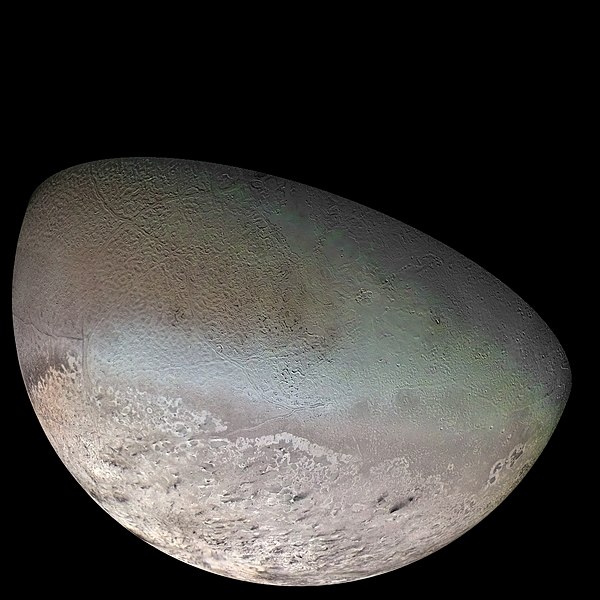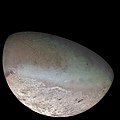Fájl:Triton moon mosaic Voyager 2 (large).jpg

Az előnézet mérete: 600 × 600 képpont További felbontások: 240 × 240 képpont | 480 × 480 képpont | 768 × 768 képpont | 1 024 × 1 024 képpont | 2 048 × 2 048 képpont | 4 700 × 4 700 képpont.
Eredeti fájl (4 700 × 4 700 képpont, fájlméret: 12,11 MB, MIME-típus: image/jpeg)
Fájltörténet
Kattints egy időpontra, hogy a fájl akkori állapotát láthasd.
| Dátum/idő | Bélyegkép | Felbontás | Feltöltő | Megjegyzés | |
|---|---|---|---|---|---|
| aktuális | 2011. október 10., 21:40 |  | 4 700 × 4 700 (12,11 MB) | Jbarta | Minimally compressed JPG from TIFF original at NASA. This image has already been colored by NASA. I think we have no business trying to "fix" the coloring. The only alteration made from the NASA original is to enlarge the canvas to enclose the complete sp |
| 2010. január 1., 23:00 |  | 4 600 × 4 600 (2,81 MB) | Supportstorm | Image Adjustments: Auto levels on contrast and color | |
| 2008. február 18., 23:59 |  | 4 600 × 4 600 (1,71 MB) | Kaldari | same image, better dimensions | |
| 2005. április 8., 06:59 |  | 4 500 × 3 500 (1,96 MB) | Bricktop | same image, higher resolution | |
| 2005. április 3., 19:13 |  | 1 024 × 796 (150 KB) | Smartech~commonswiki | A color mosaic of Triton, Neptune's moon (large). Taken by Voyager 2 in 1989. Color was synthesized by combining high-resolution images taken through orange, violet, and ultraviolet filters; these images were displayed as red, green, and blue images and |
Fájlhasználat
Az alábbi lapok használják ezt a fájlt:
Globális fájlhasználat
A következő wikik használják ezt a fájlt:
- Használata itt: af.wikipedia.org
- Használata itt: an.wikipedia.org
- Használata itt: ar.wikipedia.org
- Használata itt: ary.wikipedia.org
- Használata itt: arz.wikipedia.org
- Használata itt: ast.wikipedia.org
- Használata itt: azb.wikipedia.org
- Használata itt: az.wikipedia.org
- Használata itt: ba.wikipedia.org
- Használata itt: be-tarask.wikipedia.org
- Használata itt: be.wikipedia.org
- Használata itt: bg.wikipedia.org
- Használata itt: bn.wikipedia.org
- Használata itt: bn.wikibooks.org
- Használata itt: bs.wikipedia.org
- Használata itt: ca.wikipedia.org
A fájl globális használatának megtekintése

